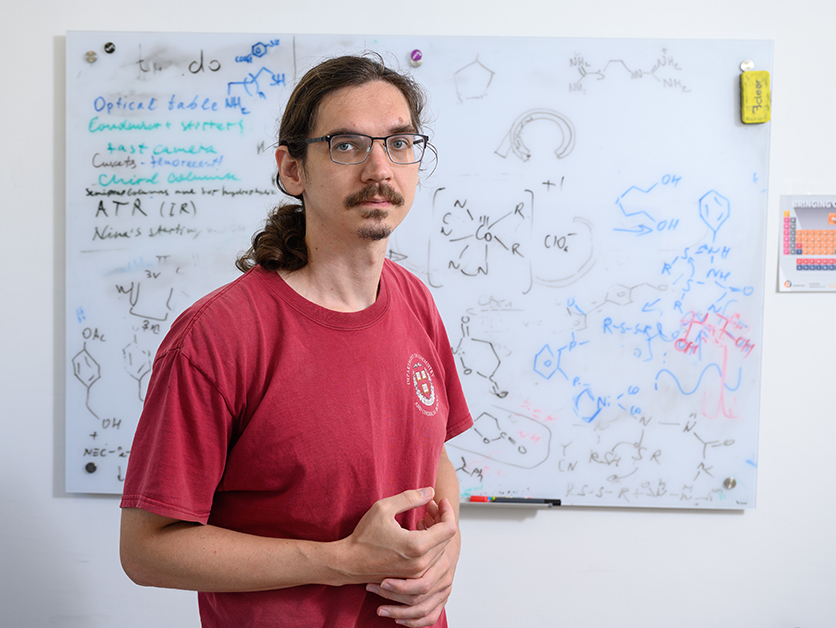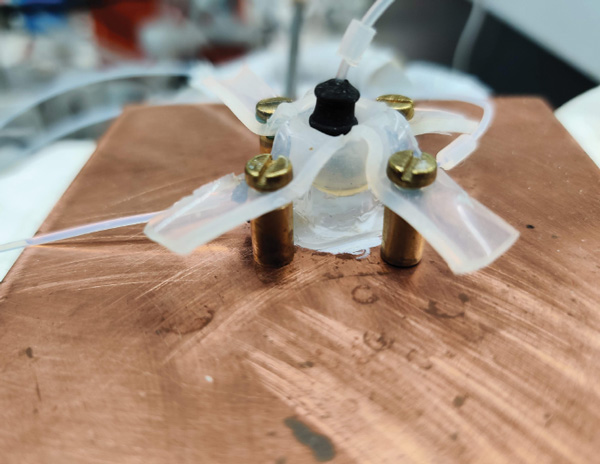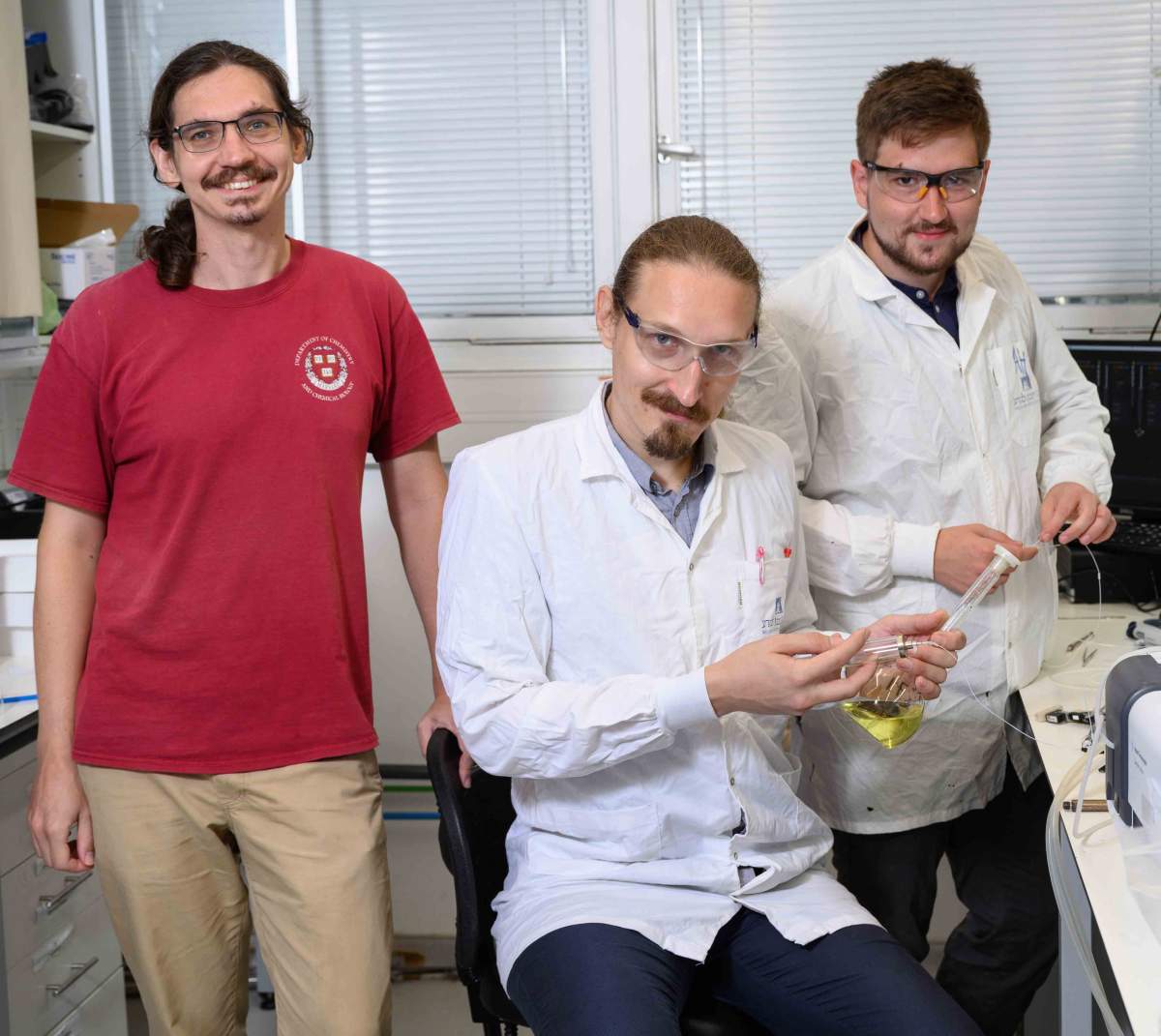Are you a journalist? Please sign up here for our press releases
Subscribe to our monthly newsletter:
We tend to think of evolution as a chaotic process from which life emerged spontaneously. But what if there were patterns that could explain how simple materials evolved into organic life? What if there were generalized models for describing how prehistoric organisms interacted with each other and became the diverse biological world we know today? While most research regarding the origin of life focuses on the actual materials from which organic life is made, Dr. Sergey Semenov of the Molecular Chemistry and Materials Science Department, a recently inaugurated department at the Weizmann Institute of Science, is asking an altogether different question.
Instead of looking at the fundamental chemistry behind the building blocks of life – materials such as proteins – Semenov is focusing on the different patterns of interactions that basic chemical materials create and that can help explain the evolutionary process.

“When you look at organic life, what you actually see are molecules interacting. In fact, the question of what type of reactions or interactions certain molecules can form is how we draw distinctions between different materials, and differentiate between the living and nonliving,” he explains.
Semenov was always interested in chemistry. He conducted his first experiments as a child in Russia in his parents’ kitchen. “I actually did very advanced experiments at home,” he says, jokingly recalling how he pushed a children’s chemistry kit to its limits, “until it became too dangerous.” He then went to Moscow State University: “It was the best place to study chemistry in Russia at the time,” he says. But he soon headed west, and after studying in working in both the Netherlands and Switzerland he eventually embarked on a postdoctorate at Harvard. It was there that he helped his supervisor, Prof. George M. Whitesides, to found a chemical origins of life lab, and he started focusing exclusively on chemical interactions.
"Our research asks: what are the different types of reactions that simple chemical materials can maintain? What we are searching for is the dynamics of the chemical machinery that creates complex life"
The different types of interactions, he discovered, can form chemical feedback loops. These are chemical processes that accelerate or suppress each other according to a certain pattern. These patterns – or “networks of interactions,” as Semenov terms them – may hold the key to understanding “how extremely complex organisms developed over time from very simple materials,” he says.
In the new study, Semenov, together with group members PhD student Alexander Novichkov and graduate student Anton Hanopolskyi, actually recreated such a process from basic interactions between very simple materials. “Our research asks: what are the different types of reactions that simple chemical materials can maintain? What we are searching for is the dynamics of the chemical machinery that creates complex life. And for that, you need to focus not on complex molecules but rather on complex behaviors that can help form complex molecules.”

Oscillation between high and low concentrations, they found, was perhaps the most basic of such behaviors. A force found in many biological processes, this type of action-and-reaction feedback mechanism, much like the mechanism behind simple mechanical clocks, is what keeps our cellular clocks ticking according to a circadian rhythm.
Semenov’s study produced only the second human-made example of a working chemical oscillator built completely from synthetic organic molecules. The system is self-propagating and maintains a constant oscillation, much like a clock, and together these two functions create what he terms “a switch” that allows certain functions to develop over time.
Semenov’s oscillator “switches” between two states, creating a feedback loop in which each state spurs on the development of the other. The clock-like mechanism led to a type of oscillation that could be instrumental in creating, and even amplifying, certain protein chains. This could have significant evolutionary ramifications: the feedback loop led to the creation of much more complex materials than those it was initially made of – like the hydrogen bonds that are at the basis for our DNA.

Though the researchers did not directly focus on DNA, using this method their “clock” mechanism did manage to create a dynamic process that could help regulate reactions such as the duplication of DNA. This, Semenov says, is “an example of how a simple process can create complex ones that we know are important in how DNA works and is expressed.”
“The end goal is to find the mechanisms that lead to biological complications,” he explains. So if we see a mechanism like oscillation take place, then we can put forward a proper hypothesis about how we got from the super basic materials we know from astro- or geochemistry to real life.”

It takes 120 minutes for the chemical oscillator to switch between one state and the other. Over time, these simple oscillations facilitate the emergence of complex chemical processes.
Dr. Sergey Semenov's research is supported by the A.M.N. Fund for the Promotion of Science, Culture and Arts in Israel; and the
Estate of Emile Mimran.